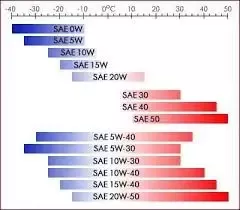Bad camshaft sensor symptoms include rough idling, delayed start, poor gas mileage, lack of acceleration, engine misfires, unexpected stalling, and check engine light. These symptoms occur when the camshaft position sensor fails to provide accurate data to the engine control module (ECM), leading to incorrect timing of spark plugs and fuel injectors.
If the camshaft sensor is the only input the ECM uses, the engine may not run at all. While it is possible to drive a car with a bad camshaft sensor, it can cause increased fuel consumption, emissions, and potential damage to the catalytic converter.
Common signs of camshaft wear include a check engine light, loss of power, popping/backfire, ticking or tapping sounds, metallic debris in the oil, and cylinder misfire. To test a bad camshaft position sensor, a scan tool or multimeter can be used to check for erratic or absent sensor signals, as well as inspecting the wiring for any damage.
Understanding Bad Camshaft Sensor Symptoms
A camshaft sensor is an essential component of an engine’s ignition system. It helps determine the position of the camshaft and sends this information to the engine control module (ECM) to ensure precise timing of the spark and fuel injection. When the camshaft sensor is faulty, it can lead to various issues that negatively impact the performance of your engine. Understanding the symptoms of a bad camshaft sensor can help you identify and rectify the problem before it causes further damage or breakdown.
Symptoms To Watch Out For
- Engine Light: One of the most common signs of a bad camshaft sensor is an illuminated check engine light on your dashboard. This warning light could indicate a range of issues, but a malfunctioning camshaft sensor is often the culprit.
- Delayed Start: If you notice that your engine is taking longer to start or requires multiple attempts before it fires up, it could be due to a faulty camshaft sensor. A delay in engine startup can disrupt your daily routine and should be addressed promptly.
- Poor Gas Mileage: A bad camshaft sensor can negatively affect your vehicle’s fuel efficiency. If you find yourself filling up the tank more frequently despite driving similar distances, it could be a sign that the sensor needs attention.
- Rough Idle: When a camshaft sensor is malfunctioning, it can cause the engine to idle roughly or inconsistently. If you feel vibrations or hear unusual noises while the vehicle is stationary, it’s worth investigating the camshaft sensor as a potential cause.
- Lack of Acceleration: A faulty camshaft sensor can also impact your engine’s acceleration. You may notice sluggishness or a lack of power when you step on the gas pedal, making it difficult to reach desired speeds or merge onto highways safely.
Impact On Engine Performance
The camshaft sensor plays a crucial role in the overall performance of your engine. When it malfunctions, it can lead to various issues, including:
- Engine Misfires: Inaccurate timing data from the camshaft sensor can cause the engine to misfire, leading to a loss of power and potentially damaging the engine components.
- Unexpected Stalling: A faulty camshaft sensor can cause your engine to stall unexpectedly, leaving you stranded in inconvenient or unsafe situations.
- Increased Fuel Consumption: If the camshaft sensor is providing incorrect data to the ECM, it can lead to inefficient fuel combustion, resulting in higher fuel consumption and increased emissions.
It’s important to address any signs of a bad camshaft sensor promptly to avoid further damage and potential safety hazards. If you experience any of the symptoms mentioned above, it’s recommended to consult a professional mechanic for a thorough diagnosis and appropriate repairs.
Credit: carpart.com.au
Common Signs Of A Bad Camshaft Sensor
Experiencing rough idling, delayed starts, and poor gas mileage could indicate a faulty camshaft sensor. Other warning signs include engine misfires, stalling, and acceleration issues, signaling potential sensor malfunction. Vigilance in addressing these symptoms promptly can prevent further complications in your vehicle.
Engine Light Illumination
If the camshaft sensor malfunctions, the engine light may illuminate, indicating a potential issue.
Rough Idling
A bad camshaft sensor can lead to rough idling as the sensor provides incorrect data to the ECM, causing misfiring.
Delayed Start Or No Start
In cases where the camshaft sensor is faulty, the engine may experience delayed starting or fail to start altogether.
Poor Gas Mileage
When the camshaft sensor is failing, it can affect the fuel injection timing, resulting in poor gas mileage.
Acceleration Issues
Issues with acceleration, such as jerking or lack of power, can be symptomatic of a faulty camshaft sensor affecting ignition timing.
Engine Misfires And Stalling
One of the bad camshaft sensor symptoms that can cause significant engine problems is engine misfires and stalling. When the camshaft position sensor malfunctions, it can lead to incorrect spark plug ignition timing, resulting in engine misfires and rough idling. This can be a frustrating issue for drivers as it can cause the vehicle to shake and vibrate, making it difficult to drive smoothly.
Effects On Engine Misfires
An unhealthy camshaft position sensor can cause a variety of effects on engine misfires:
- Erratic Ignition Timing: The camshaft position sensor is responsible for providing the engine control module (ECM) with accurate data about the position of the camshaft. When the sensor is damaged or faulty, it can send incorrect signals to the ECM, resulting in erratic ignition timing. This can cause the engine to misfire and run inefficiently.
- Rough Idle: With incorrect ignition timing, the engine can experience a rough idle. You may notice the engine shaking or vibrating when idling, and it may feel like the vehicle is about to stall.
- Poor Acceleration: Engine misfires caused by a bad camshaft sensor can also lead to poor acceleration. The misfires can affect the engine’s power delivery, making it sluggish and unresponsive when you try to accelerate.
- Decreased Fuel Efficiency: Misfires can also contribute to decreased fuel efficiency. When the engine misfires, the fuel-air mixture fails to ignite properly, wasting fuel and diminishing the overall efficiency of the engine.
Unexpected Stalling
In addition to engine misfires, a faulty camshaft position sensor can also lead to unexpected stalling. When the sensor fails to provide accurate information about the camshaft’s position, the ECM may not be able to perform the necessary calculations for fuel injection and ignition timing. As a result, the engine may not receive the proper amount of fuel and may stall while driving, leaving you stranded on the road.
Unexpected stalling can be a dangerous situation, especially if it occurs at high speeds or in heavy traffic. It’s important to take any signs of stalling seriously and have your camshaft position sensor checked and replaced if necessary to prevent further engine issues.

Credit: m.youtube.com
Diagnosing A Faulty Camshaft Position Sensor
Scan tools are essential for diagnosing camshaft position sensor issues. Connect the tool to the vehicle’s OBD-II port to retrieve trouble codes.
Using a multimeter, measure the voltage output of the camshaft sensor. A healthy sensor will provide consistent voltage readings.
Impact Of Driving With A Bad Camshaft Sensor
Driving with a bad camshaft sensor can result in rough idling, poor gas mileage, acceleration issues, and even unexpected stalling. It is not recommended to drive with a faulty camshaft sensor as it may cause further damage to the engine and emission system.
Fuel Consumption
Driving with a bad camshaft sensor can significantly impact fuel consumption. The inaccurate timing information provided by the faulty sensor can lead to improper fuel injection, causing inefficient combustion and increased fuel usage.
Emission Output
The emission output of the vehicle is adversely affected when driving with a bad camshaft sensor. Incomplete combustion due to incorrect timing signals can result in increased emissions of harmful pollutants such as carbon monoxide and hydrocarbons.
Potential Engine Damage
Continued operation with a faulty camshaft sensor can lead to potential engine damage. The incorrect timing data may cause misfires, rough idling, and other issues, ultimately damaging internal engine components over time.

Credit: m.youtube.com
Preventive Measures And Maintenance
Regular maintenance and prompt attention to potential issues related to the camshaft sensor are crucial for preventing more severe problems that could affect the engine’s performance. By implementing preventive measures and proper maintenance routines, you can ensure the smooth operation of the camshaft sensor and prevent costly repairs.
Detecting Early Signs
Early detection of symptoms related to a faulty camshaft position sensor is essential to prevent potential damage to the engine. Keep an eye out for the following early signs:
- Engine light illumination
- Rough idling
- Acceleration issues
- Delayed start or no start
- Poor gas mileage
Replacing A Bad Camshaft Position Sensor
When it comes to replacing a faulty camshaft position sensor, it’s important to follow proper procedures to ensure optimal performance. Here are the steps to replace a bad camshaft position sensor:
- Locate the sensor’s position in the engine
- Carefully disconnect the electrical connector
- Remove any mounting hardware securing the sensor
- Gently remove the old sensor from the engine
- Install the new camshaft position sensor and secure it properly
- Reconnect the electrical connector
- Perform a test to ensure the new sensor is functioning correctly
Frequently Asked Questions Of Bad Camshaft Sensor Symptoms
What Happens When A Camshaft Sensor Goes Bad?
When a camshaft sensor goes bad, the engine may idle roughly and experience delayed starts. The incorrect data can cause misfires and poor acceleration. If the sensor is the only input for the ECM, driving may result in increased fuel consumption and emissions.
Regularly checking for symptoms is essential.
Can I Drive With A Bad Camshaft Position Sensor?
Yes, but not recommended. It may cause rough idling, poor gas mileage, and engine misfires. It can lead to more fuel consumption and possible further damage to the engine.
What Are The Symptoms Of A Bad Camshaft?
A bad camshaft can cause rough idling, poor acceleration, a decrease in gas mileage, and a check engine light. It can also lead to engine misfires, stalling, and delayed or no start. If you drive with a bad camshaft sensor, it can affect your car’s performance, fuel efficiency, and may even damage the catalytic converter.
To test a bad camshaft position sensor, you can use a scan tool or multimeter to check for erratic or absent sensor signals.
How Do You Test A Bad Camshaft Position Sensor?
To test a bad camshaft position sensor, use a scan tool or multimeter to check for erratic or absent sensor signals while the engine is running. Inspect wiring for damage as well. Symptoms include rough idling, delayed start, and poor acceleration.
Conclusion
If you start your engine and notice rough idling, poor gas mileage, delayed starts, or a lack of acceleration, it could be a sign of a bad camshaft sensor. The incorrect data from the sensor can cause misfires and spark plugs to fire at the wrong time, leading to engine performance issues.
Driving with a faulty camshaft position sensor can result in decreased fuel efficiency and potential damage to the catalytic converter. To diagnose the issue, you can use a scan tool or multimeter to check for sensor signals and inspect the wiring for damage.
Read More:


